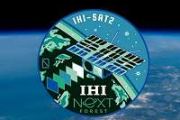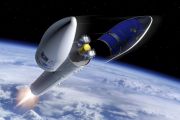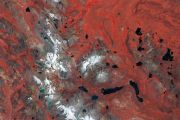
Copernical Team
Beyond Gravity to develop dispenser for Project Kuiper's satellite constellation
 Fast, affordable broadband for people worldwide - this is the ambitious mission behind Project Kuiper, an Amazon initiative to increase global broadband access through a constellation of satellites in Low Earth Orbit (LEO). A
mazon will soon begin deploying its initial constellation of 3,236 satellites and has selected space technology provider Beyond Gravity (known as RUAG Space until the
Fast, affordable broadband for people worldwide - this is the ambitious mission behind Project Kuiper, an Amazon initiative to increase global broadband access through a constellation of satellites in Low Earth Orbit (LEO). A
mazon will soon begin deploying its initial constellation of 3,236 satellites and has selected space technology provider Beyond Gravity (known as RUAG Space until the Cosmic SETI ready to stream data for technosignature research from Jansky VLA
 COSMIC SETI (the Commensal Open-Source Multimode Interferometer Cluster Search for Extraterrestrial Intelligence) took a big step towards using the National Science Foundation's Karl G. Jansky Very Large Array (VLA) for 24/7 SETI observations. Fiber optic amplifiers and splitters are now installed for all 27 VLA antennas, giving COSMIC access to a complete and independent copy of the data stream
COSMIC SETI (the Commensal Open-Source Multimode Interferometer Cluster Search for Extraterrestrial Intelligence) took a big step towards using the National Science Foundation's Karl G. Jansky Very Large Array (VLA) for 24/7 SETI observations. Fiber optic amplifiers and splitters are now installed for all 27 VLA antennas, giving COSMIC access to a complete and independent copy of the data stream Planetary scientist helps equip rover Perseverance with 4 of the 5 human senses
 For two decades, Roger Wiens has built instruments to give humans eyes and a nose on Mars - and now he's helping add ears as well.
Wiens, a professor of Earth, Atmospheric, and Planetary Sciences in the College of Science at Purdue University, and an expert in Mars robotics technology, led the team that built SuperCam, a device on the Perseverance Mars rover that includes a laser for zappi
For two decades, Roger Wiens has built instruments to give humans eyes and a nose on Mars - and now he's helping add ears as well.
Wiens, a professor of Earth, Atmospheric, and Planetary Sciences in the College of Science at Purdue University, and an expert in Mars robotics technology, led the team that built SuperCam, a device on the Perseverance Mars rover that includes a laser for zappi NASA delays final test for moon shot
 The latest test of NASA's giant Moon rocket SLS has been pushed back to allow for a SpaceX rocket to launch later this week, the US space agency announced Tuesday.
The dress rehearsal for the giant Space Launch System had been scheduled for Friday at launch pad 39B at Cape Canaveral, Florida, at the same time as SpaceX's lift-off from pad 39A.
The test of the rocket, which is to return h
The latest test of NASA's giant Moon rocket SLS has been pushed back to allow for a SpaceX rocket to launch later this week, the US space agency announced Tuesday.
The dress rehearsal for the giant Space Launch System had been scheduled for Friday at launch pad 39B at Cape Canaveral, Florida, at the same time as SpaceX's lift-off from pad 39A.
The test of the rocket, which is to return h MDA joins Lockheed Martin and General Motors on next generation lunar rover development
 MDA Ltd has announced that it is working with Lockheed Martin and General Motors to integrate MDA's commercial robotic arm technology on their planned human-rated lunar mobility vehicles.
The addition of MDA to the industrial lunar vehicle development team follows the announcement of a teaming agreement by Lockheed Martin and General Motors in 2021.
"We are thrilled to be collaborati
MDA Ltd has announced that it is working with Lockheed Martin and General Motors to integrate MDA's commercial robotic arm technology on their planned human-rated lunar mobility vehicles.
The addition of MDA to the industrial lunar vehicle development team follows the announcement of a teaming agreement by Lockheed Martin and General Motors in 2021.
"We are thrilled to be collaborati Ax-1: why the private mission to the International Space Station is a gamechanger
 It's not long since billionaires were competing to get to the "edge of space". Now, the first set of private citizens are getting ready to take a SpaceX shuttle up to the International Space Station (ISS). Unlike the short "joyrides" of Richard Branson and Jeff Bezos, this mission will be reaching the roughly 400km altitude needed to dock with the ISS.
The mission by the US commercial aero
It's not long since billionaires were competing to get to the "edge of space". Now, the first set of private citizens are getting ready to take a SpaceX shuttle up to the International Space Station (ISS). Unlike the short "joyrides" of Richard Branson and Jeff Bezos, this mission will be reaching the roughly 400km altitude needed to dock with the ISS.
The mission by the US commercial aero Astranis Space Technologies signs with SpaceX for dedicated launch in 2023
 Astranis Space Technologies Corp. has signed a contract with SpaceX for a dedicated Falcon 9 launch to put four Astranis MicroGEO communications satellites into service in 2023.
The Astranis payload is well below the maximum payload capacity for a Falcon 9 vehicle, translating into a performance bonus that Astranis is using to tailor the insertion orbit to the mission and propel its compac
Astranis Space Technologies Corp. has signed a contract with SpaceX for a dedicated Falcon 9 launch to put four Astranis MicroGEO communications satellites into service in 2023.
The Astranis payload is well below the maximum payload capacity for a Falcon 9 vehicle, translating into a performance bonus that Astranis is using to tailor the insertion orbit to the mission and propel its compac Commercial research expands aboard the International Space Station
 The International Space Station has spent more than two decades in low-Earth orbit serving as Earth's orbiting laboratory. Groundbreaking research aboard the station in its unique microgravity environment has led to benefits back on the ground and paved the way for future deep space missions.
As NASA sets its sights once again on the Moon and eventually on Mars, low-Earth orbit is playing
The International Space Station has spent more than two decades in low-Earth orbit serving as Earth's orbiting laboratory. Groundbreaking research aboard the station in its unique microgravity environment has led to benefits back on the ground and paved the way for future deep space missions.
As NASA sets its sights once again on the Moon and eventually on Mars, low-Earth orbit is playing Elon Musk's Starlink loses frequencies in France
 Starlink, the satellite internet service of tech billionaire Elon Musk, has lost its frequencies in France after a legal battle waged by environmental groups.
In a ruling published Tuesday, the State Council, France's supreme court for administrative justice, quashed a February 2021 decision by the Arcep telecoms regulators granting Starlink two bands of frequencies to link the satellites wi
Starlink, the satellite internet service of tech billionaire Elon Musk, has lost its frequencies in France after a legal battle waged by environmental groups.
In a ruling published Tuesday, the State Council, France's supreme court for administrative justice, quashed a February 2021 decision by the Arcep telecoms regulators granting Starlink two bands of frequencies to link the satellites wi Axiom set to launch, next NASA moon rocket to wait a little longer for testing
 NASA has decided to pause testing on its next moon rocket, the Space Launch System, and instead proceed with the launch of SpaceX's first private astronaut mission, Axiom-1.
"We'll fall in behind [Axiom]," Jim Free, NASA's associate administrator for exploration systems development, said Tuesday at an Artemis briefing at the 37th annual Space Symposium conference in Boulder, Co.
NASA has decided to pause testing on its next moon rocket, the Space Launch System, and instead proceed with the launch of SpaceX's first private astronaut mission, Axiom-1.
"We'll fall in behind [Axiom]," Jim Free, NASA's associate administrator for exploration systems development, said Tuesday at an Artemis briefing at the 37th annual Space Symposium conference in Boulder, Co. 





























